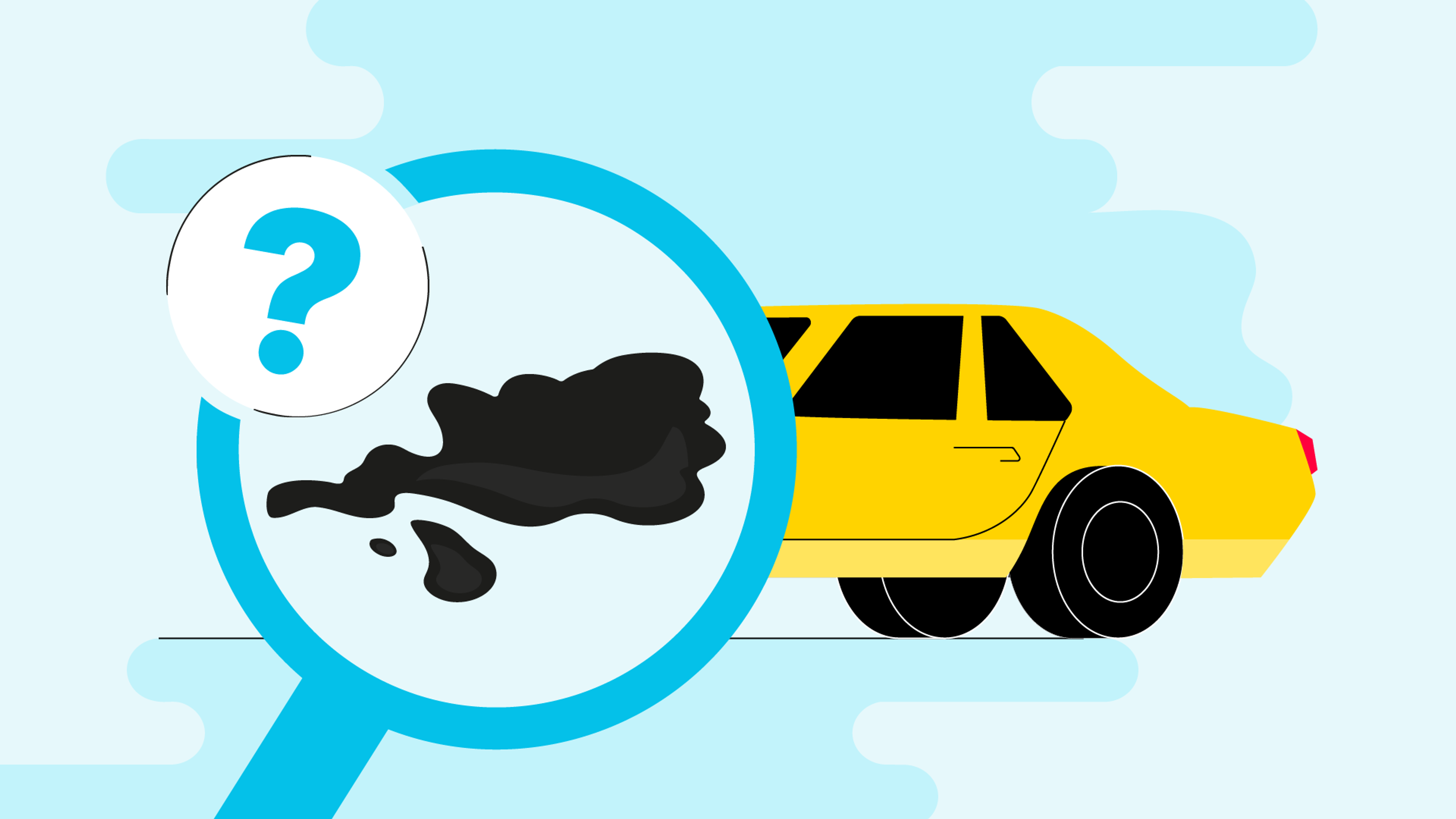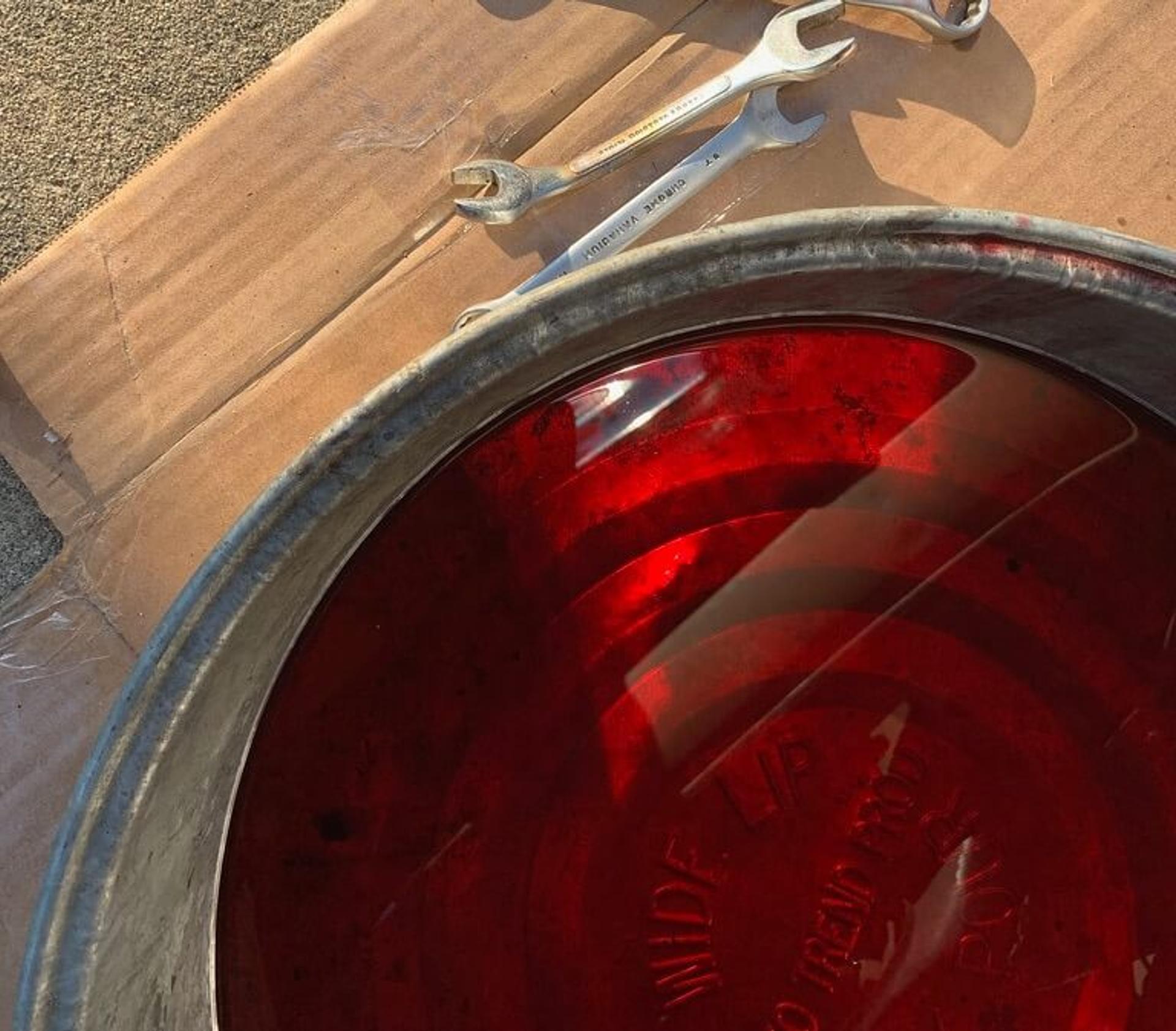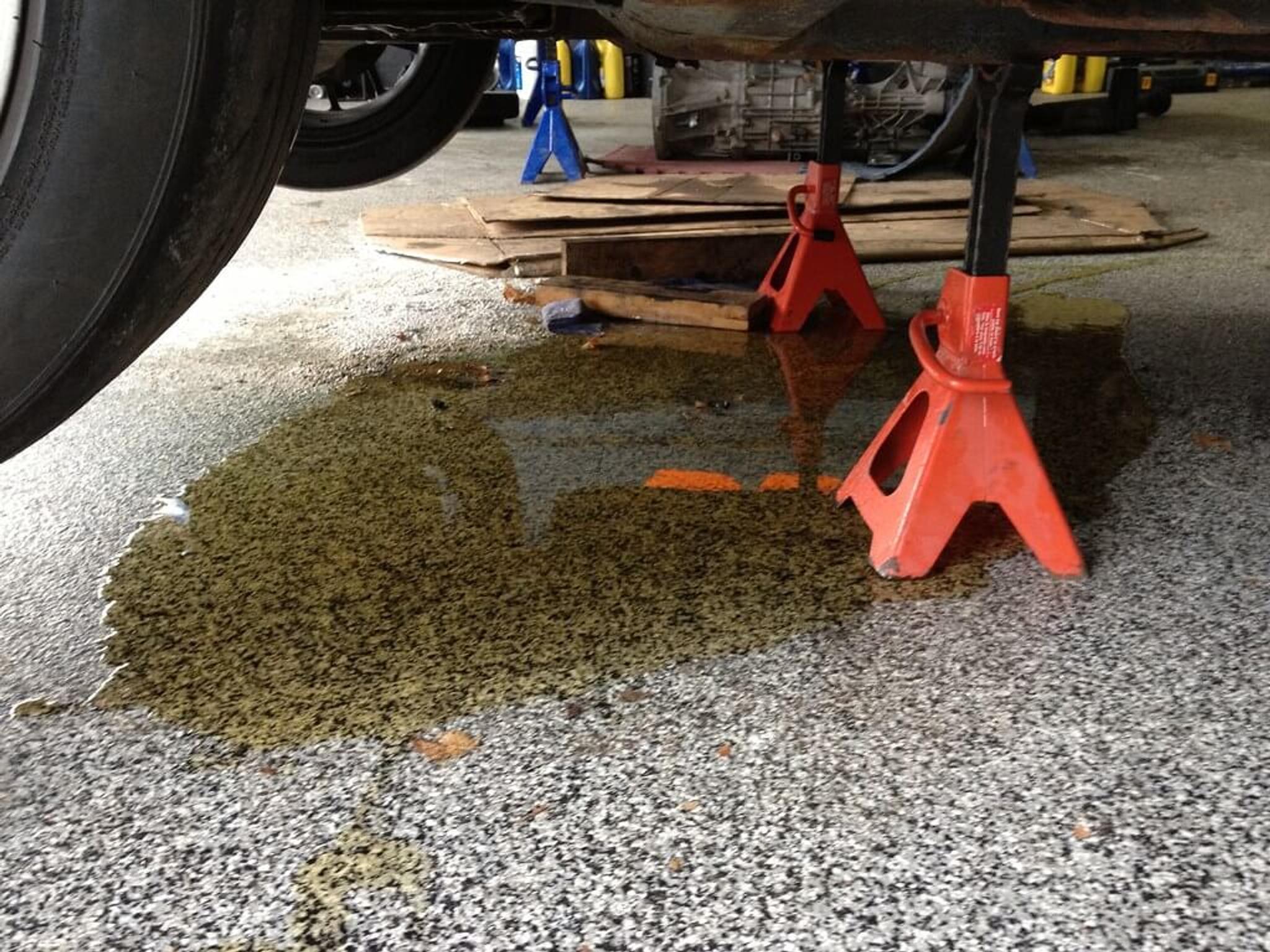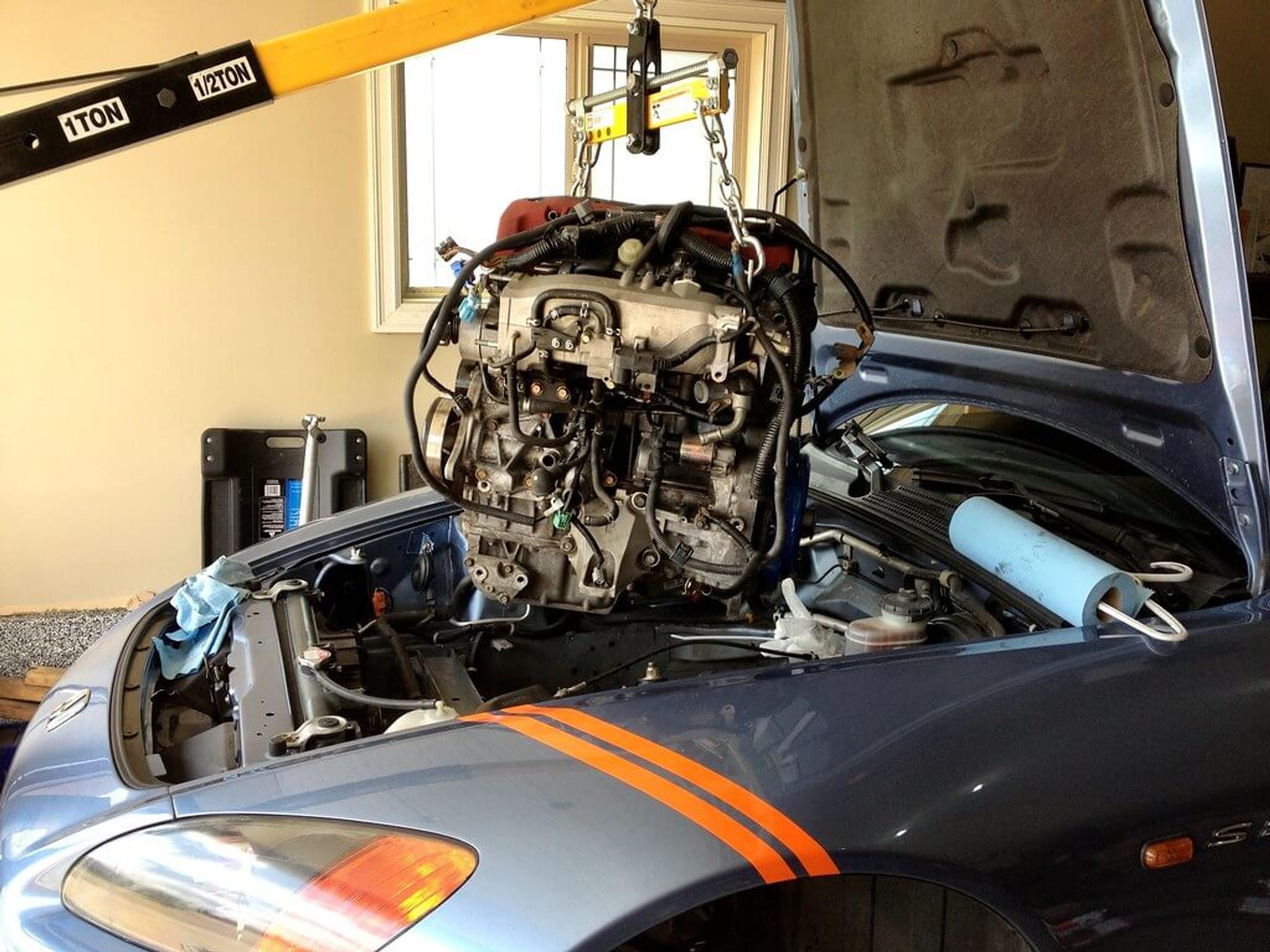
A car that runs on gasoline or diesel may require up to a dozen different fluids for cooling, cleaning, lubrication, and other processes. Some fluids are vital for your vehicle, and a fluid leak can cause a fire hazard, damage electrical systems, and even destroy your engine.
Various systems in your car can start leaking, so it helps to be able to recognize the problem and react accordingly.

Looks can be deceiving!
Don't risk your safety - check it with carVertical first
What causes fluid leaks?
Usually, car fluids start leaking through worn seals or gaskets. In more severe cases, fluids leak because of damaged engine or transmission internals. Regular car maintenance will prevent common leaks, as manufacturers recommend replacing specific parts together with seals and gaskets.
However, even under a perfect servicing schedule, problems can occur prematurely, so be aware that an unexpected puddle under your car may signify a serious issue.
You can recognize most fluids by their color
Most fluids in your car have different colors, depending on the fluid type, quality, and age. For instance, the engine oil is always brown and becomes black after some time.
However, washer fluid comes in a variety of colors. In such cases, knowing the smell and thickness of each fluid may also help.
Light yellow, red, or brown – power steering fluid
Power steering fluid can be light yellow, red, or brown. It’s necessary for cars with hydraulic power steering systems. You may hear an unpleasant whine while turning the steering wheel once the system is low on fluid.
Usually, hydraulic power steering fluid leaks through the pump pulley or steering rack. In this case, you can damage your power steering pump, so check the fluid right away. Cars with the electric power steering system don’t have this fluid.
Dark red or brown – ATF (automatic transmission fluid)
Transparent red or brown fluid may be dripping from your automatic transmission. Maintaining a proper fluid level is necessary to preserve your transmission, so you should address a leak immediately.
Red color indicates that the fluid is still fresh, while brown fluid is contaminated and should be replaced as soon as possible. Some transmission fluids may also be green.

Transparent – water or fuel
Clear fluids leaking from your car are usually either water or fuel. If water is dripping when using an AC, it's probably condensation from the cooling system. Fuel creates colorful "rainbow" patches on water and has a distinctive smell.
Fuel leaks are hazardous because they can get on the exhaust system and cause a fire. If you smell fuel inside or around a car, shut the engine immediately and look for leaks.
Clear or yellow – brake fluid
This may be your brake fluid. It's much thicker than fuel or water, and color gives away its age – old brake fluid has a brownish color, while fresh fluid may be clear.
Brake fluid leaks warn you that your car needs a brake job as soon as possible. Check if your car is low on brake fluid because your brakes may be weak and fail at any moment. You should replace the fluid if it looks brownish or contaminated – brake fluid is hygroscopic, meaning it absorbs humidity and loses efficiency.
Bright green, pink, blue, or yellow – coolant or washer fluid
Coolant or washer fluid usually come in bright colors. Coolant has a sweet smell, whereas washer fluid often smells of alcohol.
Washer fluid usually leaks because of loose tubing. However, you can still drive to a repair shop without the risk of damaging something. Coolant leaks are more dangerous, as they can cause your engine to overheat.
Light brown to black – engine oil
This is probably your engine oil. Fresh oil is brown but becomes black after some time, especially in older diesel engines. Oil is vital for your engine, as it lubricates, cools, and cleans its internals. Therefore a leak will cause serious engine problems if you keep ignoring it.
Worn gaskets and seals aren’t the only causes of engine oil leaks. Those looking for cheaper alternatives often buy incorrect engine oil types, resulting in damages and leaks.
Always follow the manufacturer’s recommendations before buying your oil.

Graphite gray – differential fluid
Differential fluid is usually graphite gray. All cars have a differential in the middle of their running axles, meaning front-wheel-drive and rear-wheel-drive vehicles have one differential, while all-wheel-drive vehicles have two.
The fluid minimizes the friction of a differential’s internals. You may hear a humming noise when your differential is low on fluid, but damages can be irreversible at this state, therefore, regular leak checks make sense.
How to identify car leaks by location
Don't rely solely on color, as you may need more information to properly identify a problem. Take a second look at the leak and find its source.
Anywhere under a car
Fuel can leak from anywhere under a car because fuel lines are installed all across a vehicle to connect a fuel tank to the engine. Loose connections, damaged fuel lines, or faulty injectors are the most common reasons for fuel leaks.
The middle of an undercarriage
Dripping condensate from an AC in the middle of an undercarriage should only appear when you’re using the AC because it generates condensate as temperatures change. Condensate is pure water, so it doesn't stain the pavement like oil, and you have nothing to worry about.
Engine
A black or dark brown leak from your engine is probably engine oil. Rubber seals, tubes, and gaskets deteriorate as they age and eventually let the oil through. An oil pan is the lowest point of an engine, therefore oil usually drips from here.
Transmission
Transmission fluid leaks from the transmission as axle or shaft seals wear out. The transmission is connected to the engine, but remember that its position depends on whether the engine is transverse or longitudinal.
Around the engine bay
Coolant may leak from all around the engine bay and even into the interior. Coolant runs through the engine, hoses, and the radiator in front of the engine. Loose hose clamps or a damaged radiator are the most common leak causes.
Differential
This fluid leaks only from differentials. They’re located in the middle of each drive axle and contain a fluid that should be replaced every 30,000 to 60,000 miles (50,000 to 100,000 km). Contact your mechanic immediately if you notice a differential fluid leak because differential repairs are very expensive.
Behind the front bumper
A wiper fluid reservoir is often located behind the front bumper. Usually, wiper fluid leaks through seals and tubes around the reservoir, but nozzles and connectors under the bonnet may also be the problem. Many cars have a separate washing system for the rear window, too.
How much does it cost to fix a leak?

Fixing costs vary greatly depending on the problem, the mechanic, and the vehicle type. For instance, a coolant leak fix may cost anywhere between $10 to $1,500, depending on whether it's a loose clamp or a cracked engine block. Fuel can leak from damaged fuel lines or a faulty high-pressure fuel pump, and the latter option is way more expensive.
If you know how to identify the most common car fluid leaks, you can call your mechanic and describe the situation, asking for a preliminary price of repairs. Moreover, there are hundreds of potential leak sources in a car, each of them requiring a unique fix.
How to avoid leaks after buying a used car
Usually, leaks occur when drivers don't follow a basic car maintenance schedule. Seals and gaskets wear out over time, therefore many of them should be replaced during regular servicing.
For instance, a water pump should be replaced together with its seal at least every 100,000 miles (160,000 km). Oil pan bolt washers and seals should be replaced during every oil change, but many people choose to over-tighten these bolts instead, often resulting in damaged tread and leaking oil.
If you're buying a used car, check its history and take it for a professional inspection before making a purchase – a vehicle's condition is essential if you want to avoid leaks and other problems. Previous damages must be repaired properly. Otherwise, you may encounter numerous problems. Avoid vehicles without a servicing history – you want to ensure previous owners didn't skip regular maintenance.


Check your VIN
Avoid costly problems by checking a vehicle's history. Get a report instantly!
Frequently asked questions

Article by
Evaldas Zabitis
Evaldas has been writing since middle school and has had a passion for cars for as long as he can remember. Right after getting his driver’s license, he spent all of his savings on shoddy cars so he could spend time fixing, driving, and selling them. Evaldas is always interested in automotive technical innovations and is an active participant in automotive community discussions.
